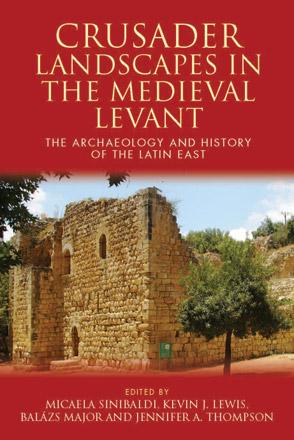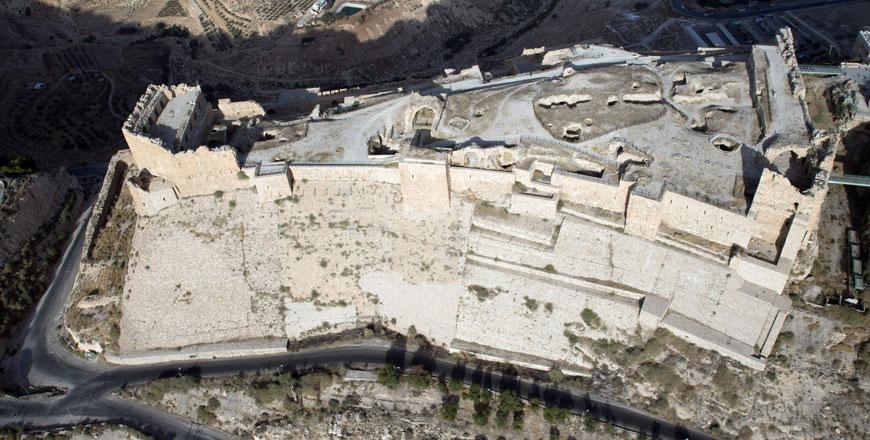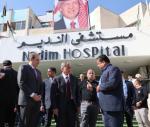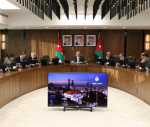You are here
Foreign archaeologists tour Crusader-era castles in Jordan to reflect on link between art, archaeology
By Saeb Rawashdeh - Nov 17,2016 - Last updated at Nov 27,2016
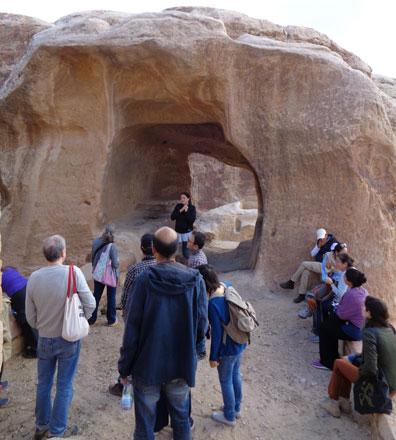
Micaela Sinibaldi guides a group of scholars during a recent visit to Al Wuayra castle in Petra in the Kingdom’s south (Photo courtesy of Micaela Sinibaldi)
AMMAN — A group of 10 foreign archaeologists recently concluded a tour of little-known Crusader-era sites in Jordan to learn more about the link between art and archaeology during the epoch of Crusades, according to the organisers.
The programme, which concluded earlier this month and was titled “Art of the Crusades: a Re-Evaluation”, also included seminars held in Amman on relevant topics.
The 10 young scholars, who were selected out of hundreds of applicants, were led by Micaela Sinibaldi, a PhD holder from Cardiff University and an expert in the history and archaeology of Transjordan during the Crusader period, on a tour of the Crusader-period castles of Karak, Shobak, Al Wuayra and Al Habis.
The visit of Crusader-period sites in Jordan has been planned in such a way to encourage communication and exchange of data between art historians and archaeologists, emphasising the aspect of architecture and building techniques, which are both key to a better understanding of the chronology and phasing of the long history of some of these castles, Sinibaldi told The Jordan Times in a recent interview.
"Particularly rich ground for discussion" was provided by visits at the castles of Karak and Shobak, which were the two main castles of the Lordship of Transjordan, or the Lordship of Crac and Montreal of the Latin Kingdom of Jerusalem, but which were still important sites in the later Ayyubid and Mamluk periods, when further constructions of parts of the castles and modifications were carried on, the scholar added.
The castle of Shobak, built by King Baldwin I in 1115 during a visit to Transjordan, was the main administrative centre of the Lordship until this role was assigned to Karak, which was built in 1142.
Sinibaldi emphasised that the group of scholars could see and reflect on the similar architectural elements found in the Karak and Shobak castles, in areas such as the churches, the defensive walls and the residential areas and on how building styles of the Crusader period differ or bear similarities with those from the Ayyubid and Mamluk periods.
On the other hand, Al Wuayra and Al Habis castles in Petra, which are closer in their chronology of foundation to Karak castle, were instead mainly occupied in the Crusader period and, therefore, offer the opportunity for observing the material culture and architecture of this epoch specifically, she explained.
The scholars also visited Islamic sites in Ajloun, Husban and Tawaheen Al Sukkar, according to the organisers.
This international research programme — "Connecting Art Histories” — is funded by the Getty Foundation and consists of one-week seminars which took place in Greece and Turkey last year.
The two-year programme for young and early career academics explores Mediaeval art and archaeology of the Eastern Mediterranean, focusing on the material and cultural interactions between different states and people of that time — Christian, Judaist and Islamic — and how they influenced each other.
Course participants will be able to compare the sites studied in Jordan with those in other countries visited and reflect on the interactions of aspects of material culture across the Mediterranean in the mediaeval period, the organisers said.
Related Articles
AMMAN — Academics have often relied on “old-fashioned views” when it comes to understanding the Crusader period, and these views have also a
KARAK — By analysing the architecture and historical documentation, it is possible to reconstruct a detailed history of the Karak Castle dur
AMMAN — Shobak Castle, originally built in 1115 by King Baldwin I, was a significant Crusader stronghold strategically positioned to control


